DEEP SOUTH TOAD TURMOIL
Is an access road through a township more important than the western leopard toad?
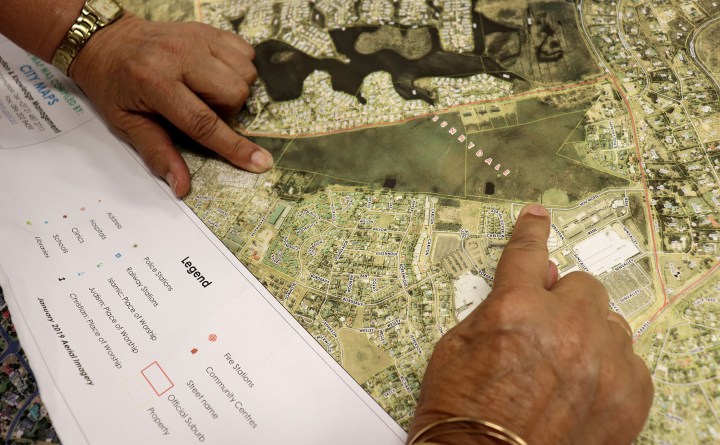
Cape Town, one of South Africa’s most rapidly urbanising cities, is still struggling to strike a balance between the needs of under-served areas with rapidly growing populations and developments, and that of biodiversity protection and preservation in an urban setting.
In interviews with Daily Maverick this week, residents and community leaders of Masiphumelele on the Cape Peninsula urged for human needs, the upliftment of their overpopulated community, and road users to be prioritised in the unfolding court action between the Noordhoek Environmental Action Group and the City of Cape Town to try to stop a 1.2km road being built near the Noordhoek wetlands.
This Phase 1 extension of Houmoed Avenue near the Noordhoek wetlands will join the existing Houmoed Avenue with Lekkerwater Road in Masiphumelele, and is expected to alleviate traffic congestion on Kommetjie Road while making it easier for Masiphumelele residents to commute.
However, the extension is being opposed by Noordhoek residents as it cuts through breeding ponds of the critically endangered western leopard toad.
The residents of Masiphumelele
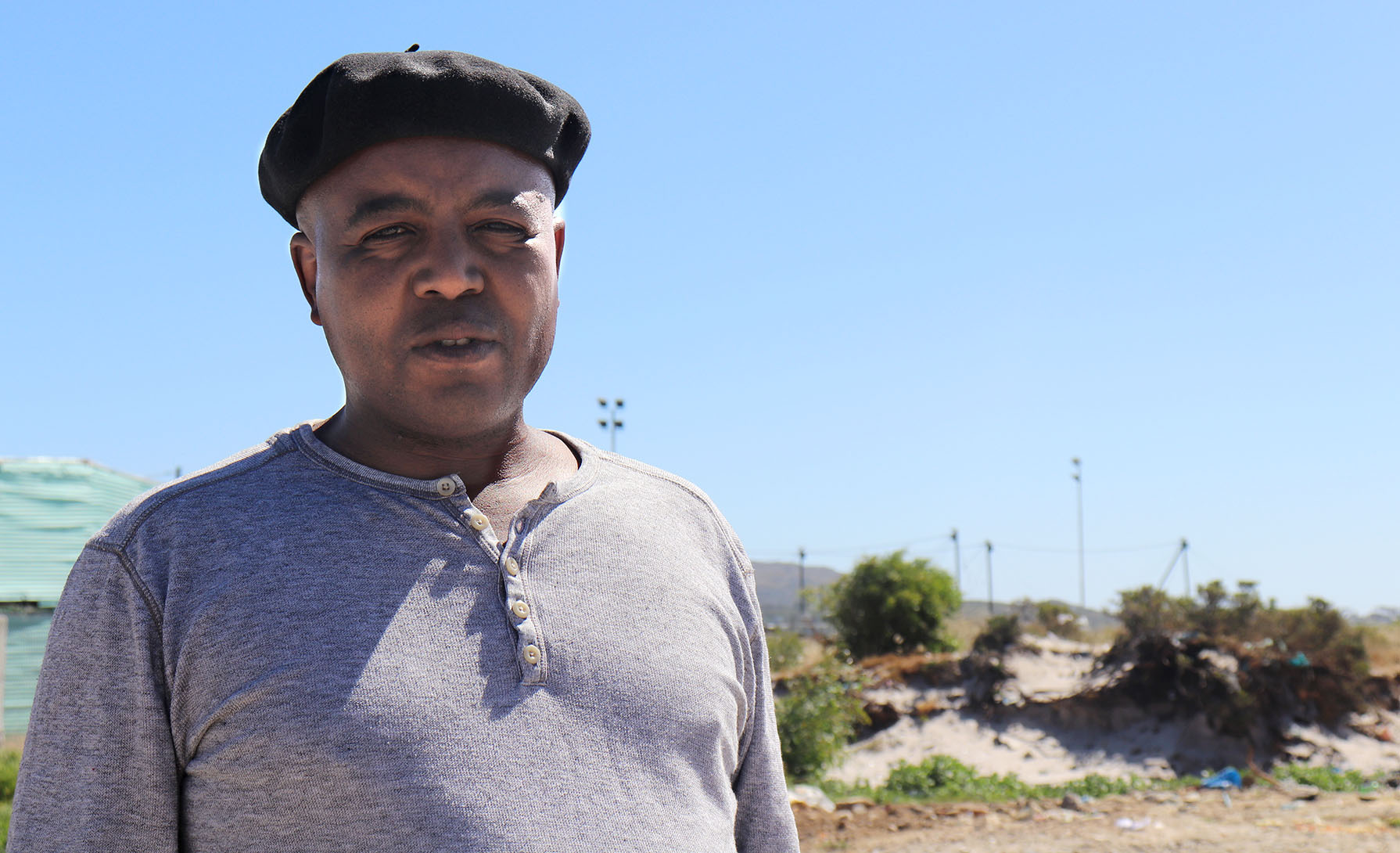
Masiphumelele resident Mfundiso Ngetu. (Photo: Kristin Engel)
Looking towards the wetlands near his Masiphumelele home, Mfundiso Ngetu said: “The needs of the community need to be prioritised above the needs of the wild animals in the wetlands, because if you compare Masi with Noordhoek, there are a lot of differences in the environment.
“If this road is not going to be built, then everything is going to stay like this… they need to consider that the priority must be on the community, not the wildlife.
“The rich people there in Noordhoek don’t consider the importance of developing our communities because they always think about themselves. If you look at Masi, it was not like this before. It gradually developed and it is going to get bigger than this.”
Ngetu explained that the extension would make it far easier for township residents to access Long Beach Mall, from where they often travel on to other destinations. Also, the new road was likely to significantly reduce traffic build-up on Kommetjie Road.
“To get from Masi to the mall can take 25-35 minutes, despite it only being about 3km apart, and then to get from the mall to town can take 40 minutes, so it’s over an hour commute (one way), and depending on traffic it could take even longer,” he said.
Ngetu said: “Even people from Ocean View [a nearby predominantly coloured township] use Masi when they try to escape the congestion of Kommetjie Road, especially in the morning peak hours.”
“We only have one entry and exit point in Masi, making it like a kraal for cattle. If more entrances and exits are built, like with this road, it will give us opportunities and easier access to jobs.”
Some residents agreed that there should be ways of balancing the needs of the community with those of biodiversity preservation, but that the most pressing need is a second entrance and exit in Masi.
Masiphumelele community leader Shaun Dyasophu said informal houses were already expanding into the wetland, with some being built above the water on stilts.
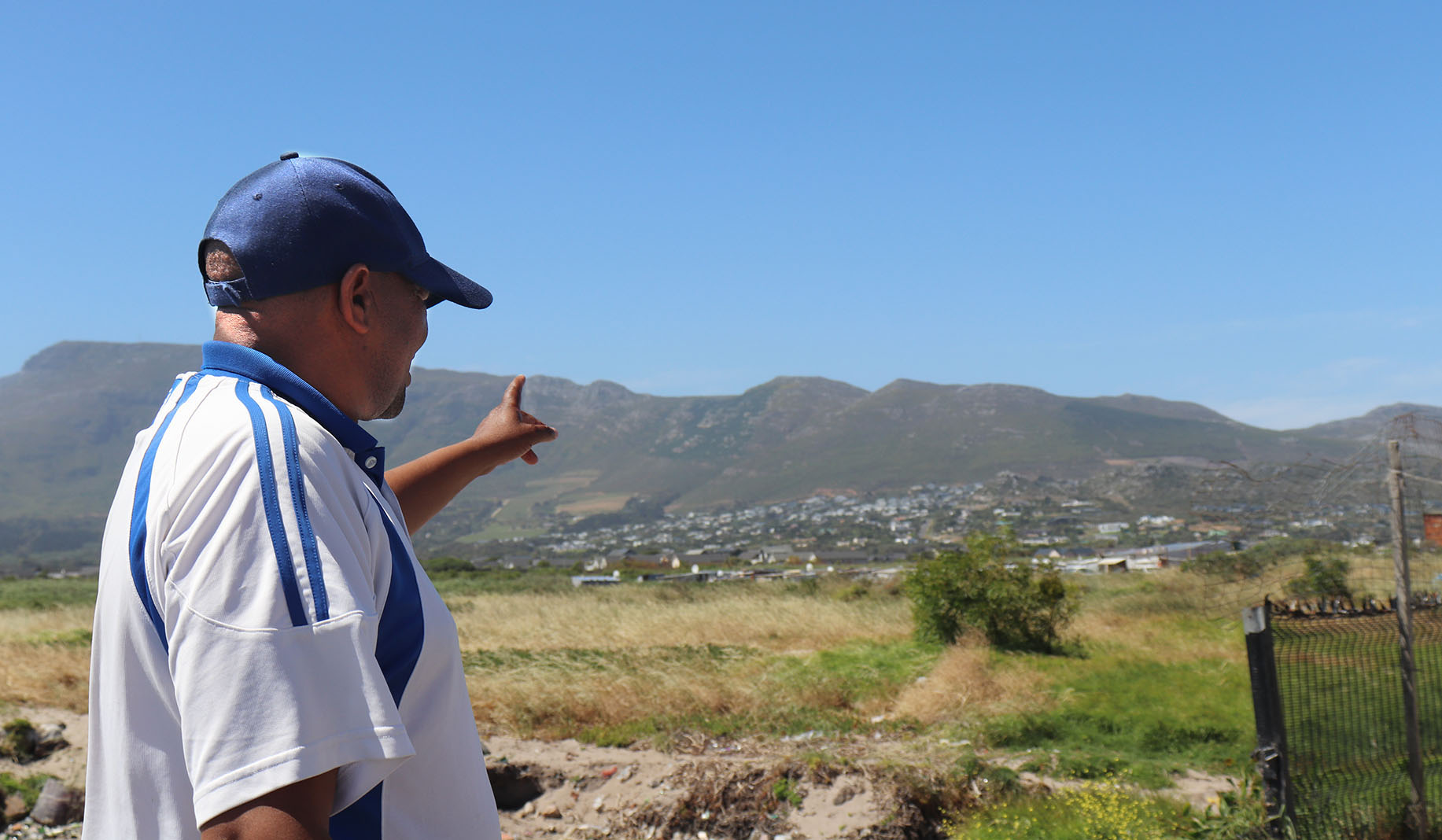
Masiphumelele community leader Shaun Dyasophu points out the Noordhoek Wetland. (Photo: Kristin Engel)
Dyasophu said residents were aware of the risks of flooding, but that they had nowhere else to go.
Masiphumelele was never designed to accommodate this many people. The population has grown from 500 in the early 1980s to around 30,000 today.
Speaking to Daily Maverick, Nonkosi Mngqibisa, a resident and Squatter Forum leader, said the community was not isolated from the wetlands’ wildlife, including the western leopard toad.
“They get inside our houses and we go to sleep listening to them croak.”
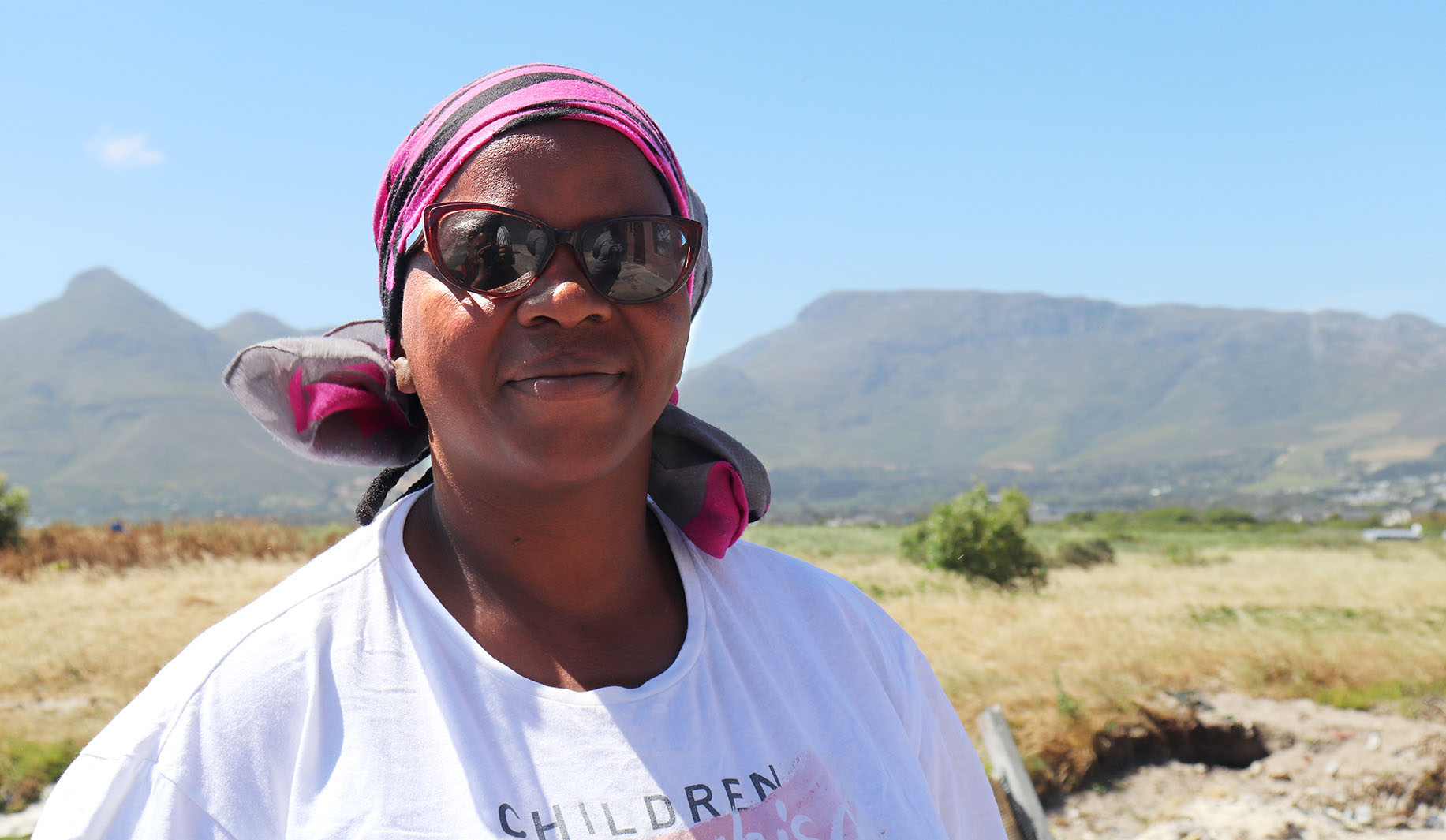
Nonkosi Mngqibisa, Masiphumelele and Squatter Forum leader. (Photo: Kristin Engel)
Mngqibisa said some residents fear the snakes and other animals that live in the wetlands, and that their needs should take priority over the wildlife.
Co-founder of environmental group ToadNUTS, Alison Faraday, said: “Making these decisions should not be a binary choice… As in, either we assist Masi or we protect the environment. This is poor reasoning. We need to do both – they are both essential.”
The City of Cape Town (CoCT) believes that the Houmoed Road extension will address historical spatial segregation through transport and planning, and that it exemplifies the importance of creating a policeable hard boundary between the encroaching informal expansion of Masiphumelele into the wetlands.
“The unchecked encroachment of Masiphumelele into the habitat of the western leopard toad represents a far more fundamental threat to the existence of the [western leopard toad] than a permeable roadway on only one of four sides of the wetland,” stated the city in its heads of argument in the ongoing court case.
A 20-year history
Having worked in this community for decades, Felicity Purchase, ward councillor for much of the southern peninsula, explained that the city had intended to build this road for years, but that there had always been pushback from Noordhoek residents, mostly because of the wetlands, the western leopard toad and their breeding ponds.
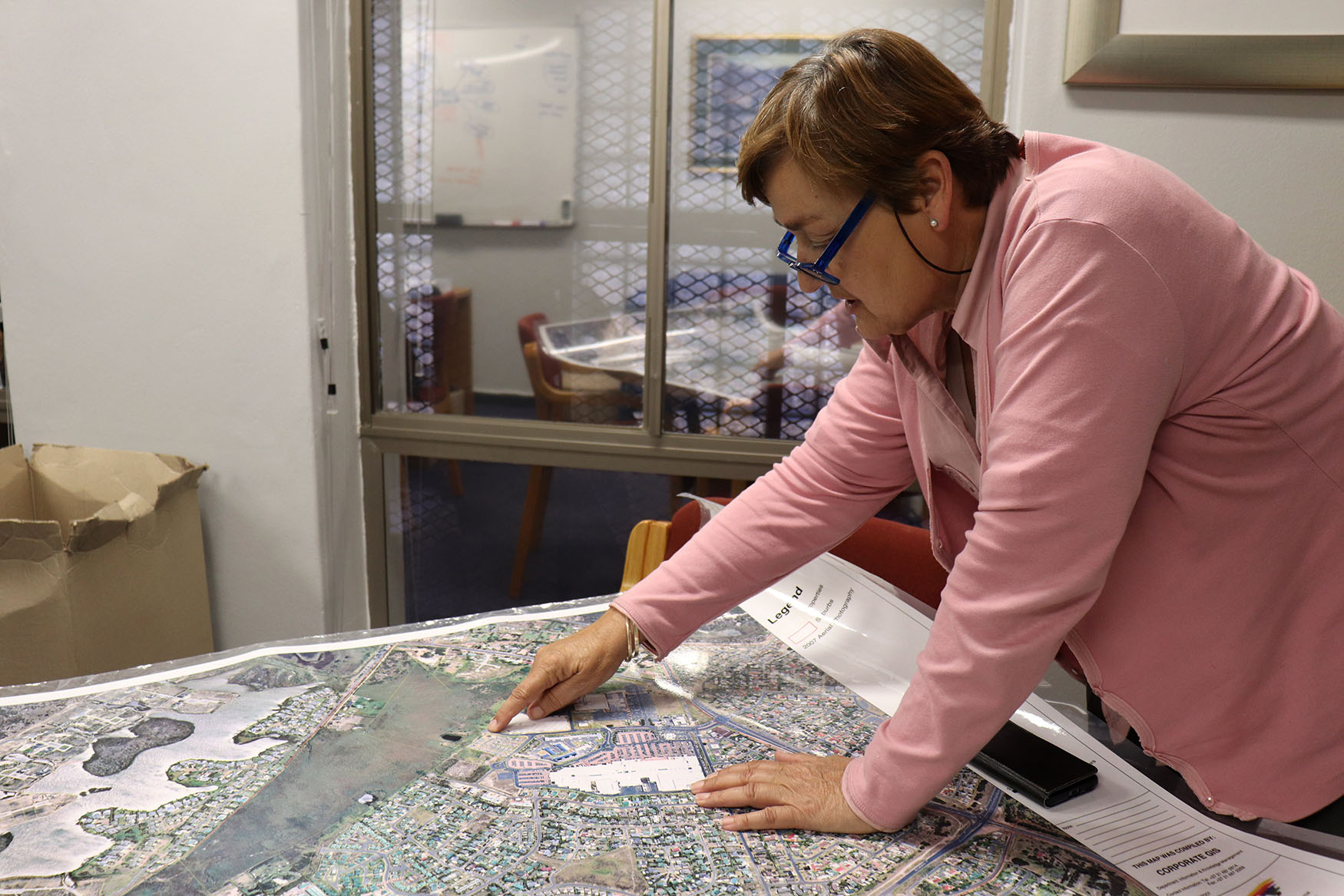
Felicity Purchase from the City of Cape Town going over the development and arising difficulties for the Noordhoek area and Masiphumelele. (Photo: Kristin Engel)
Purchase said the proposal to extend Houmoed Avenue originated in the planning for Sunnydale Township more than 20 years ago, where it was envisaged that the road would serve as an arterial link between Noordhoek Main Road and Kommetjie Main Road. Sections of Houmoed Avenue already exist between Noordhoek Main Road and Lekkerwater Road (Noordhoek side) and between Kommetjie Main Road and Masiphumelele Phase Four (Kommetjie side).
The proposed Houmoed extension is the remaining mid-section of the road needed to complete the intended arterial link.
During a protest last week outside the Western Cape High Court against the proposed road, Noordhoek residents advocated for the city to consider long-term thinking patterns that do not endanger the wetlands, and to work towards improving public transportation for all, or find alternative road solutions in areas that are not environmentally sensitive.
Read more in Daily Maverick: City of Cape Town taken to court over proposed road that threatens endangered toads
In court documents, the City of Cape Town states: “The City regards the construction of the Houmoed Extension as a vital intervention to ease traffic congestion in the Kommetjie road network and to integrate, both spatially and commercially, the historically segregated Masiphumelele into the Noordhoek/Kommetjie Valley.
“This intervention enjoys the support of the City’s spatial planning and development strategies and plans.”
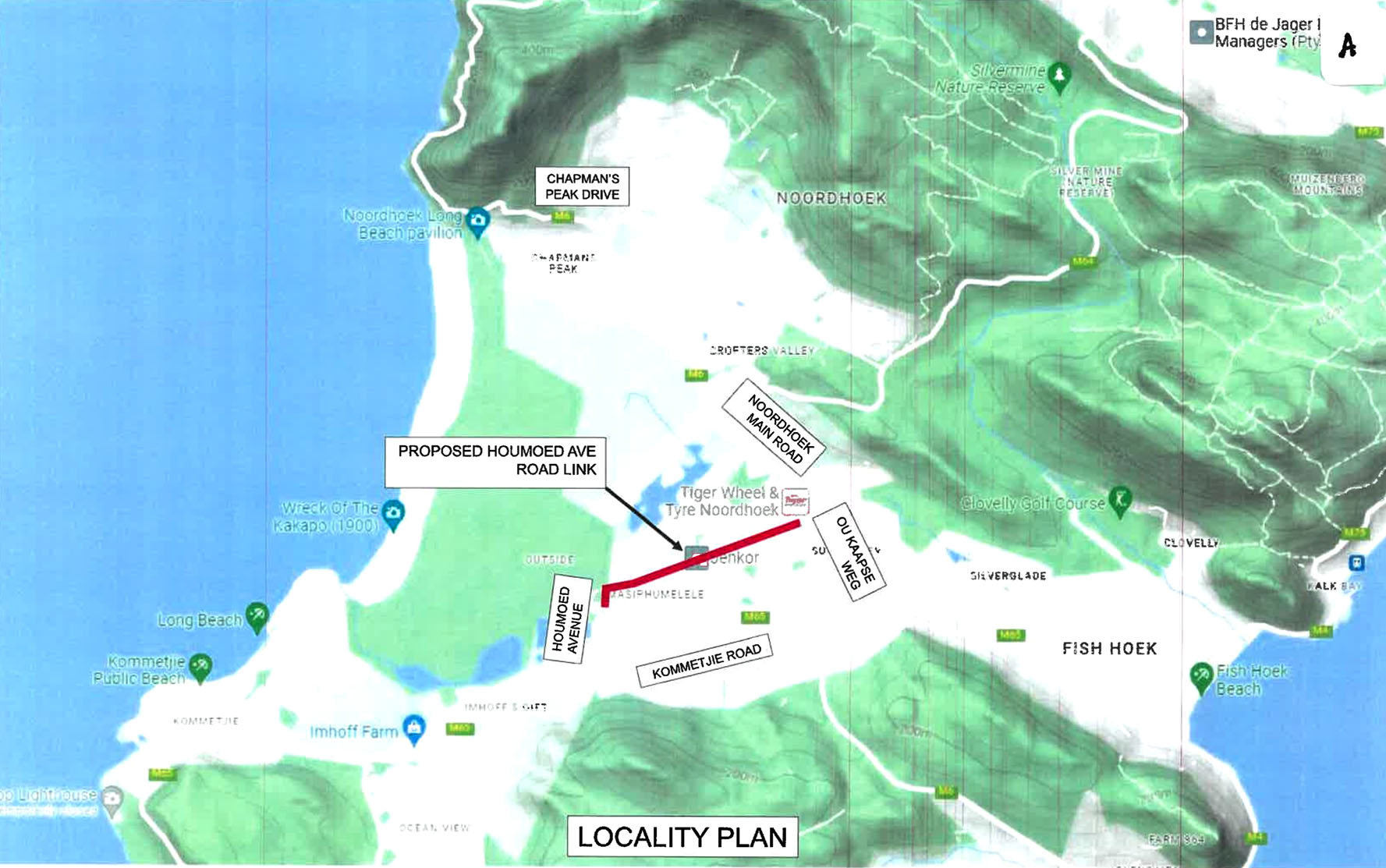
A map indicating where the proposed road would be built. (Image: Supplied)
A transport study included in the court documents observed that congestion along Kommetjie Road has a major impact on bus and taxi services travelling between the public transport interchange at Fish Hoek Station and the residential townships of Masiphumelele and Ocean View, as well as to and from employment opportunities in Fish Hoek itself and also in the Fish Eagle and Heron Park industrial areas.
According to the study, by 2028 the road network would, in the absence of intervention, be operating well over capacity and the construction of the Houmoed Extension is essential if the traffic generated by future developments in the area is to be accommodated.
A changed environmental landscape
The city has made a strong case for biodiversity preservation in Cape Town, even recently announcing the expansion of nine existing reserves and proclaiming six new reserves in Cape Town.
But from the court case, it is clear that a delicate balance needs to be achieved between biodiversity protection and conservation and seeing to the needs of under-resourced areas with rapidly growing populations.
Before we can look at achieving this balance, it’s important to recognise the history of how these areas came to be established and how policies and the environmental landscape have changed over the years.
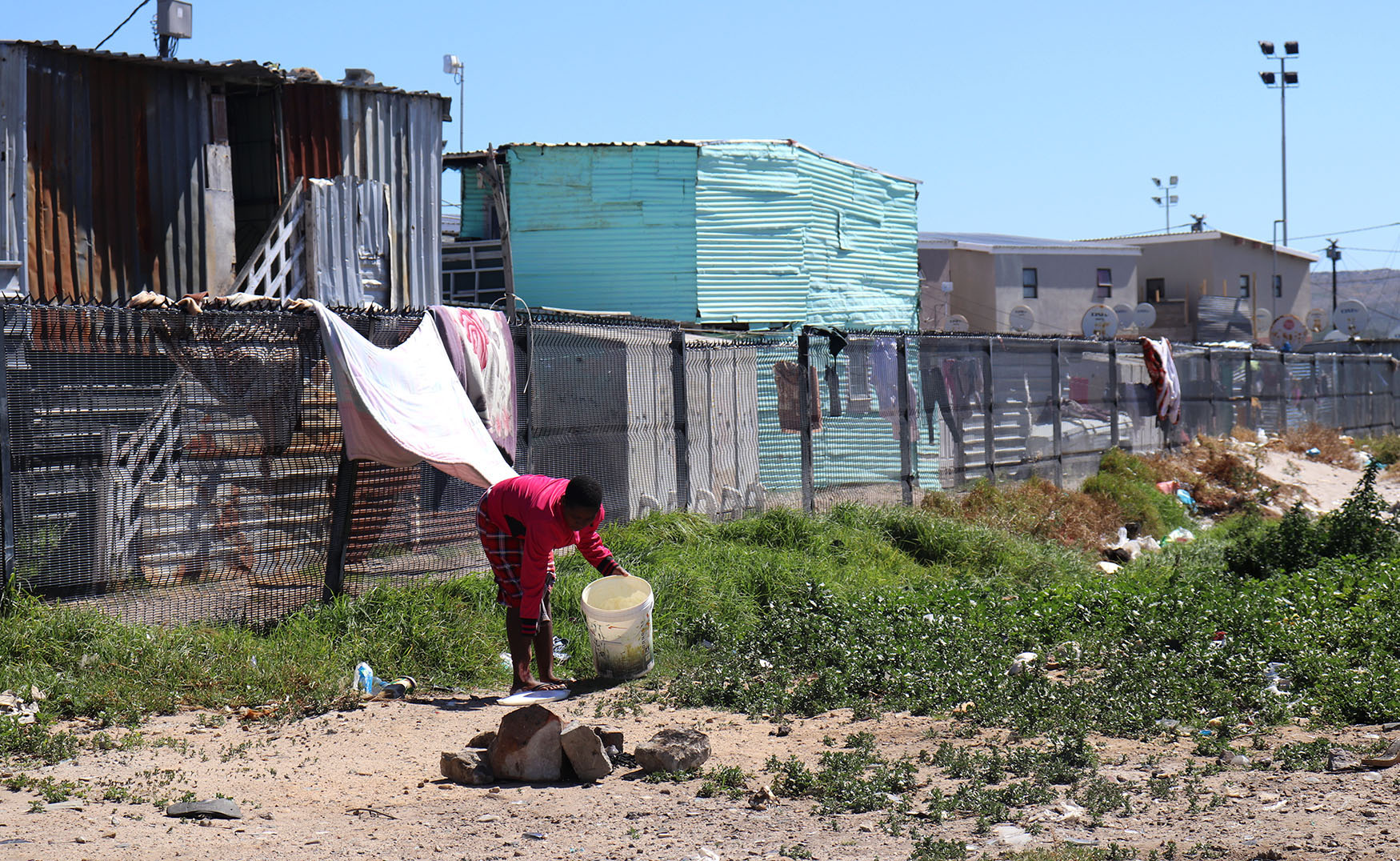
A part of Masiphumelele on the bank of the Noordhoek Wetlands. (Photo: Kristin Engel)
Charlton Ziervogel, managing director of the Community Organisation Resource Centre, an NGO supporting communities to drive their development agendas, said: “A hard pill to swallow is that the way our cities have developed in South Africa [was] controlled in a very specific way. This meant that certain population groups got the first crack at what land was available.
“We know there are places that have been developed that would not have been developed if the current laws around protecting nature were in place, but it’s happened and that is what it is.
“Part of how we deal with the current situation is that we also have to look at a just transition into this new urban future that we’re going into. You’ve got lots of people that require coming to urban areas now, and you cannot use nature as another stick to stop people from accessing opportunities in urban areas,” he said.
Ziervogel said that people had to find a way of balancing both.
“If we don’t find a way of getting this harmonisation going, we are going to get more encroachment where it’s uncontrolled and causes damage to the environment. We’ve got to find that balance,” Ziervogel said.
Approaches to achieving a balance
Prof Eugene Moll from the University of the Western Cape’s Department of Biodiversity and Conservation Biology said the City of Cape Town was between a rock and a hard place when it came to this matter.
“The city, in making a strong case for biodiversity preservation, needs to be applauded, but the city also needs to provide spaces for the health and wellbeing of all its citizens…
“Just compare the middle-class areas with their trees and green spaces, to the informal settlements of the east where there are no green spaces or trees.
“We live in a city of two parts – the haves, and the have-nots,” he said.
Moll said the needs of under-resourced communities should be given more consideration.
Mzwanele Zulu, national coordinator of the Informal Settlement Network based in Langa, said: “Biodiversity preservation is something crucial, but one observation is that whenever there is such conservation taking place, there are no clear educational programmes for under-resourced areas to understand biodiversity preservation and conservation policies.”
Ziervogel and Zulu both said the role of education was important in achieving the balance between biodiversity conservation and community developmental needs and that both needed to be prioritised, especially in urban areas.
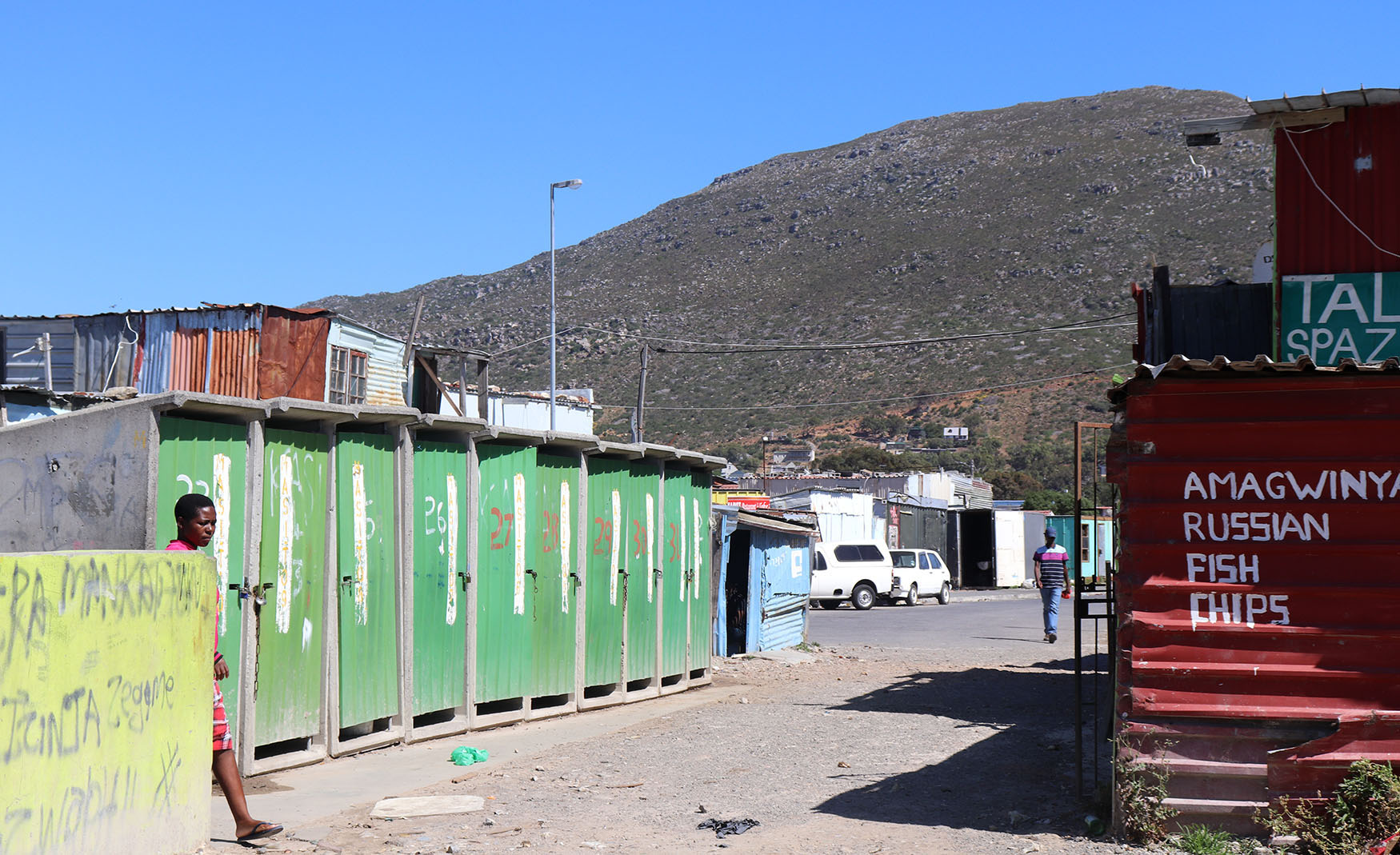
Some Masiphumelele residents use the section of Noordhoek Wetlands behind them to relieve themselves. (Photo: Kristin Engel)
“I’m not saying that we should just forget about green areas… We’ve got to find ways of living with this. Part of the proactive approach is that there should be a plan in place about how all communities in proximity to conservation areas interact with those environments and come up with an education process,” said Zulu.
The resource centre has had instances where communities start projects in their areas that complement nature – such as in Stellenbosch where a community employed biomimicry, where they learn from what nature does and how it can be used to solve human design challenges.
“The water that flows through the settlement is kept clean because of having the right kinds of plants on the canal or the channel where the water flows through… It’s not impossible to pull these things off. The issue is obviously around the scale of the problem, and whether the city is willing to commit the resources,” said Ziervogel.
A delicate balance and engagement needs to be struck here to avoid the cycle of wetland loss, threatened livelihoods and worsening poverty. These effects are the result of years of mistakenly seeing wetlands as wastelands rather than life-giving sources of jobs, incomes and essential ecosystem services.
The current court case highlights a contentious and multifaceted issue, but it should not be forgotten that wetlands provide natural solutions to the era-defining global threat of climate change, absorbing carbon dioxide and providing a buffer against the impacts of floods, droughts, hurricanes and tsunamis, and build resilience to climate change. DM







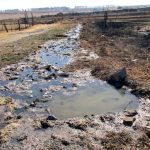












 Become an Insider
Become an Insider
Agreed that development has taken place on sensitive ecological land that it should never have been developed on in the first place, specifically looking at those who have always been advantaged and could afford it. But just because the population is swelling and urbanising does not mean that people’s needs come before those with whom we share this planet (toads, etc). The world is screaming out in more ways than one that it is not coping and that should be at the forefront of policy makers’ and developers’ minds.
It’s not a “development” it’s a mass informal settlement that’s grown unabated like so many in Cape Town
reply to Ben Harper – A “mass informal settlement” is also a development, albeit for the poor and disadvantaged who eke out a miserable existence and try to cope as best as they could. They were also born here and as South Africans have the same rights as you.
Oh what rubbish, a development is planned together with services delivery and town planning, this is people putting up shacks where they like when they like with no thought or consequence to what is around them, including jobs or ANY discernable source of income. Wake up man, this is a HUGE problem in the WC
Oh an no, I certainly don’t have the right to go where I want and build what I want, neither do you or any other South African so get real. The constitution gives us the right to OWN property, it does not give anyone the right to free property or take or use anyone else’s property at will
A mass informal settlement with no plans and no rules, is the opposite of a development.
Just because thousands flocked to the Cape because they see more hope there, does not give them the right to occupy, contaminate and destroy.
As a resident of this area, I’m sick and tired of the “chosen few” privileged people who indulge their sense of compassion and outrage on the future of a singular species of amphibian, while blithely ignoring the pressing needs of poorer communities. The road is years overdue and its construction will not destroy the Western Cape Leopard Toad presence in the vlei, but it will alleviate massive traffic congestion and enable Masi residents to get to the shopping malls quicker and cheaper.
This is most certainly not about a single species of amphibian: amphibians are indicator species for biodiversity health. That we have one fairly well studied amphibian with a known breeding presence here is just one aspect of this case. This wetland receives all runoff from the entire valley and as noted is already under massive pressure.
If this wetland collapses, and this road will certainly push it further toward collapse by opening up an entire new front of encroachment and pollution, the entire Noordhoek wetland ecosystem is at risk. This is the largest reasonably intact wetland system in the city and it provides massive services such as flood alleviation, groundwater recharge, water cleansing, biodiversity support, etc.
This is not an either or question. Yes we need development but do we really need to build roads in wetlands?
And if this road is built all that it will do is encourage more development, more traffic and more pressure on an already totally overburdened ou Kaapse Weg, that it is directed toward.
Lets see what happens after Kommetjie road is doubled (this is already budgeted for and in planning) to Ocean view and decide if this road is still needed then.
Hear hear! Thank you for posting this and clarifying the issue.
I agree. The WLT is actually prolific….in winter they are around in their thousands. Its no ” Climate change bellweather”. Thats NIMBY speak….Provision is made in the new road for their access via water drains etc….
This is a microcosm of a global problem; is Man to continue with taking over every resource in and on our planet, and thus in the process, determining which species, if any will and can survive?
Since the year 1900, when the human population was around 1 billion, and there was far more diversity and numbers of many other species, we have, as a result of Man being the apex species, destroyed so much flora and fauna, and between now and 2050, a short 26 years hence, the African population is set to more than double.
This cannot continue; loss of bio-diversity, particularly in Africa is a grave risk, not just to Man, but our climate, water security and probably a further 75% of species going into extinction.
We don’t need a bandaid solution for the Noordhoek region, we need a solution for the whole of our continent.
This road is badly needed for both Masi and the South Peninsula. Only access road at present is Kommetjie Rd which is hopelessly outdated. There is a lot of development planned. Traffic is already backed up for kilometres every day. What is not mentioned in this article is extensive environmental studies were done by v reputable folks and there is a lot of specific provision made for the toads. The toads are very prolific in the area, despite being endangered they are really everywhere….
Noordhoek residents are very concerned that this road will somehow affect their area and traffic but I think this is being sensationalised. Same thing when they built the new Checkers Mall, there was uproar…now nobody can do without it… the toads will survive, lets build a road please, it is really really necessary…..